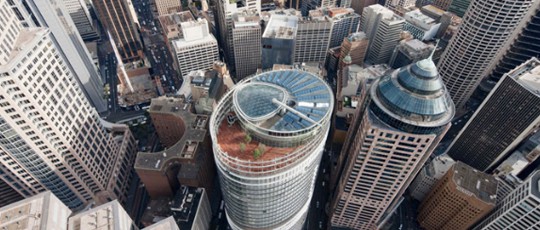Commercial Property Markets Looking Up In 2014
Australian economic growth was below trend in 2013. Weak consumer spending and business investment coupled with soft income growth ensured it was a lackluster year of data. How did commercial property fare? Lets have a look at the latest data.
Yields are high across the sector
Yields were relatively high across the commercial sector for the last period.
Average yields for office space were 8.6% pa, industrial 9.88% pa, and retail 8.28%. Yields were as high as 12.2% pa in Perth Industrial spaces.
Compression in sight for industrial sector
Industrial rent growth softened overall in 2013. CBRE expect that rents will stabilize through 2014 and eventually recover in 2015. This will mean a broader yield reduction in 2015 as the rent growth recovery becomes more ingrained.
The stars may align for ailing manufacturing
The demise of manufacturing has been suggested many times in recent years. With a lower AUD, recovering housing sector and modest growth in consumer demand we expect to see positive development in the manufacturing sector in 2014-15. As the graph below indicates, there will not be drastic increases in growth; it will stay on a steady upward trajectory and likely push rents along as well.
Changing focus in retail market
Retail property markets are also shifting, in line with how consumers are spending retail dollars and the broader economy. While prime strip locations have historically achieved high rental rates, there has been continued deterioration in rental growth over 2008-12. Data from 2013 shows that prime strip rental growth continued to erode. CBRE expect that over 2014-15 households will become more responsive to the low interest rate environment and their credit appetite will improve. An increase in discretionary spending will support retail and the bulky goods sectors.
Research by Colliers International indicates that investors are shifting away from ‘trophy’ shopping centres to convenience and non-discretionary retail assets. Some institutional investors have already mandated to acquire neighborhood and sub-regional centres. The graph below indicates a downward slide in yields for regional shopping centres since 2009. Forecasts suggest this will continue into 2014-15.
Not so Prime Office space
Over the last 12 months vacancy rates have increased across all major CBDs and metro office markets. This softer tenant demand has seen rents stabilize, while rising incentives has seen effective rents actually decline. Brisbane experienced the weakest office market ever recorded. In the last 3 months of 2013 the vacancy rate increased to 15.4%. While it is expected that 2013 was the trough for the market, CBRE says that the rent cycle will remain under pressure for an extended period ahead of peak vacancy in 2015-16 in most markets.
CBRE also expect that the absence of rental growth accompanied with higher bond yields, as low interest rates unwind globally, is likely to cause yield compression. We are already beginning to see this story play out in the far right hand side of the graph below.
Conversions of secondary grade office assets have also increased recently. This reflects the soft market in the office sector as well as the limited supply of sites available for residential property.
While conversion rates were increasing at the end of 2013 so too were enquiries into office space, having increased by 29% when compared to the same period in 2012. This is a good sign after a lackluster 2013. Colliers expect that there will be a pause in rent reductions if these enquiries are maintained.
Cheap to borrow
The decline in risk premium and borrowing costs has been a key rallying point for prime property yields in 2013. Lower risk premiums coincided with a reallocation from cash into property and equities by domestic fund managers with improved risk appetite and lower compensation for risk within required returns. While the decline in risk premium is expected to continue throughout 2014-15, borrowing costs will slowly head up as the economy improves.
Increasing sales by foreigners and Australians
Over the past five years the buyer group experiencing the strongest growth in investment has come from offshore investors. Annual foreign acquisitions of $4.8 billion topped the previous peak of 2011. The last calendar year also saw domestic investors reenter the market at a rapid pace. Domestic investors now account for 70% of total direct sales. The graph below shows a clear upward trend for both domestic and foreign purchasers.
CBRE report that the relative attractiveness for foreign investment will gradually unwind as the rest of the global economy improves and the yield differential story shifts in favour of the US.
Conclusion
After a year of soft vacancy, slow rental growth and international competition for commercial property, positive changes in the domestic economic environment will bring increased discretionary spending and housing activity which we expect will have strong benefits for the commercial property market. After a relatively tough period, the outlook is good.




